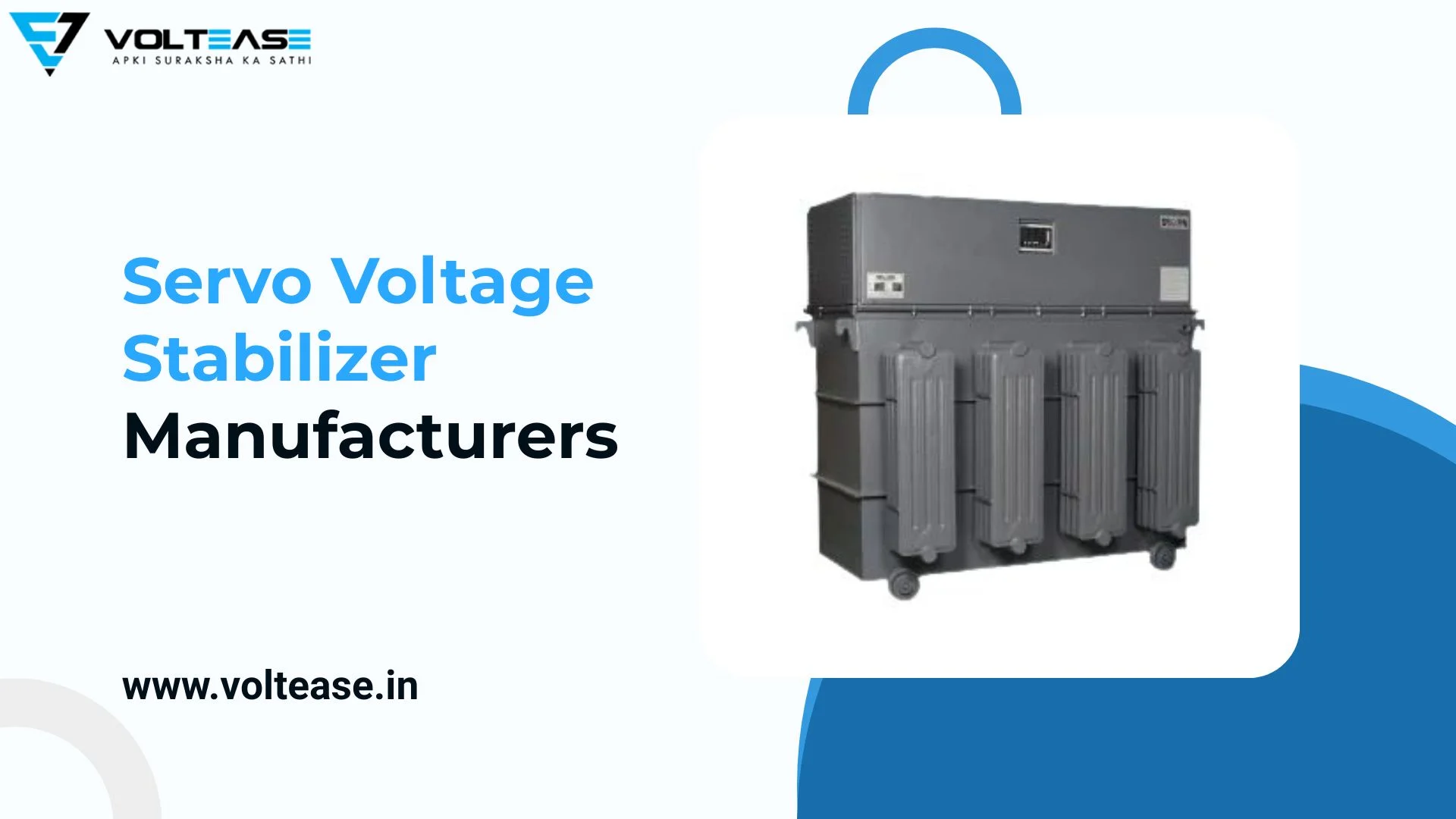Voltage fluctuations can cause huge damage to electrical appliances and machinery, leading to reduced lifespan, malfunctions, and costly repairs. To tackle the problem of sudden voltage surge, a reliable voltage stabilizer is what we all need. The installation of voltage stabilizers helps maintain a consistent voltage supply, and they also help eliminate all the above-stated problems. Both Servo Voltage Stabilizers and Conventional Voltage Stabilizers serve the same purpose; but there is a huge difference in their technology and performance. Being one of the top servo voltage stabilizer manufacturers, we at Voltease are sharing a few differences in between the two to help you all know which one is better.
Technology used in both stabilizers
One of the major differences found between the two is in regards to the technology used in voltage stabilization. Servo voltage stabilizer uses a dynamic voltage control system which is highly efficient in stabilizing voltage and minimizing fluctuations up to great extent. They are dependent on high-quality servo motors for adjusting the output voltage continuously, ensuring precise regulation with minimal delay. Whereas Conventional Voltage Stabilizers are dependent on transformers with tap changing mechanisms to stabilize voltage. They can regulate voltage but are not as fast or precise as the one with servo motors. It makes Servo Voltage Stabilizers an ideal choice for environments where voltage stability is important, such as industrial plants and sensitive electronic equipment.
Durability of both stabilizers
When it comes to durability, Servo Voltage Stabilizer is considered best in comparison to conventional stabilizers. They come with fewer moving parts and have sophisticated design, making them last longer. Their components are designed to withstand wear and tear, making them handle frequent voltage fluctuations without showing any signs of degradation. These stabilizers offer protection against overloads, short circuits, and other electrical hazards. However, Conventional Voltage Stabilizers, come with several mechanical components like relays and transformers, which wear out frequently. These stabilizers are more prone to damage when facing continuous or extreme voltage fluctuations.
Energy efficiency of both stabilizers
Servo Voltage Stabilizers automatically adjust to changing voltage conditions and operate with minimal energy consumption. It makes these stabilizers quite cost-effective. Whereas, the Conventional Voltage Stabilizers make use of a linear system that lead to higher energy wastage. The mechanical parts involved in their operation can cause more power loss, especially when there is frequent voltage fluctuation. This also increases electricity bills, making it quite expensive. It makes servo-voltage stabilizers a cost-friendly option, but ensure that you buy them from reliable servo voltage stabilizer manufacturers.
Conclusion
Considering the differences shared above, we can say that both Servo Voltage Stabilizers and Conventional Voltage Stabilizers offer protection to appliances and machinery from frequent voltage fluctuations. But when we compare them based on the technology used, their longevity, and energy efficiency, servo voltage stabilizer is considered the best. We at Voltease are one of the ISO certified servo voltage stabilizer manufacturers offering high quality, well-integrated, and durable servo stabilizers with warranty on each.

